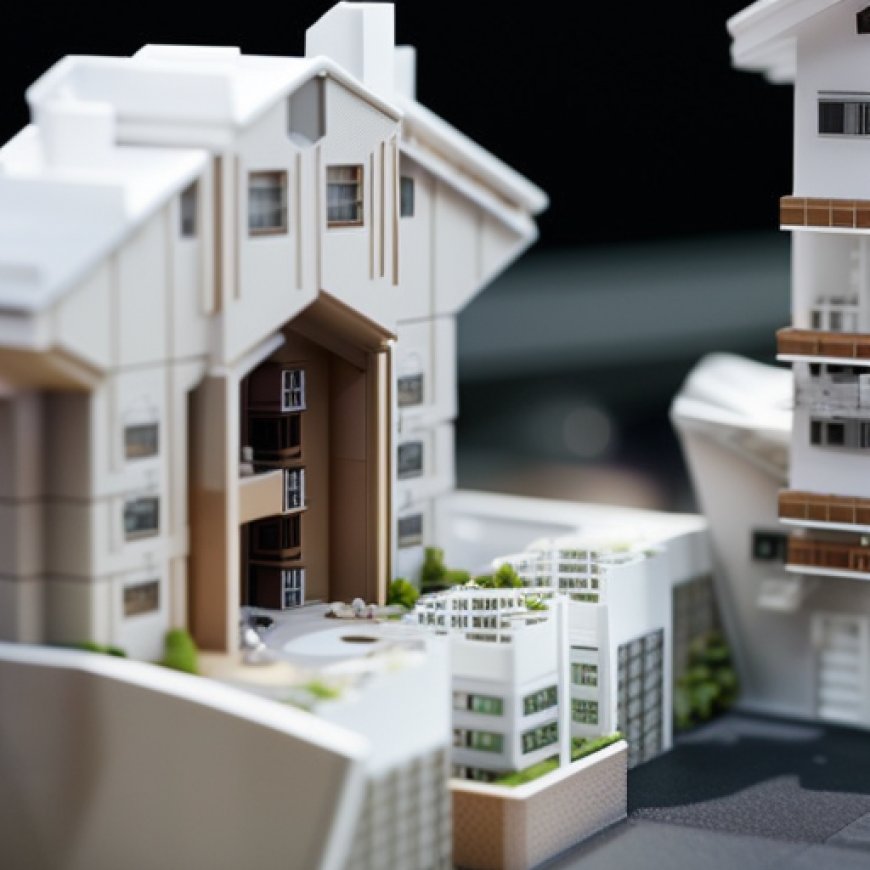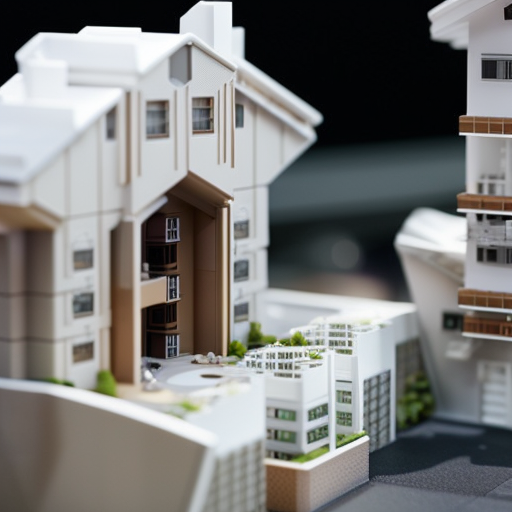The 3D-Printed Affordable Housing of the Future Will Be Recyclable
The 3D-Printed Affordable Housing of the Future Will Be Recyclable Reasons to be Cheerful


University of Maine’s 3D-Printed Homes Utilize Sawmill Residuals
The University of Maine has partnered with Penquis to construct a neighborhood of 3D-printed homes using sawmill residuals. According to the university, the state’s sawmills produce nearly one million tons of wood residuals annually. Each 600-square-foot unit requires approximately 10 tons of wood residuals, meaning that theoretically, 100,000 housing units could be produced each year using just sawmill residuals.
Funding and Timeline
Last year, the University of Maine’s Advanced Structures and Composites Center received $3.3 million in funding for this project. The collaboration with Penquis aims to build a ready-to-live neighborhood consisting of nine 3D-printed homes for people experiencing houselessness. The team is currently navigating the final regulatory hurdles, and it is anticipated that the houses could be ready for occupancy as early as this spring.
Rapid Construction Process
Once this pilot project is completed and the University of Maine reaches full commercial capacity, a home can be 3D-printed in as little as two days. This includes the construction of the roof, walls, and floor system. The technology also has the potential to be used for long-term infrastructure projects, such as cabinets, countertops, and bath fixtures. The scalability and replicability of this technology make it applicable not only locally but also globally.
Sustainable Development Goals
The University of Maine’s Advanced Structures and Composites Center aims to address several Sustainable Development Goals (SDGs) through this research and technology. By utilizing bio-based raw materials, the construction process alleviates strains on the supply chain and addresses labor shortages. The goal is to provide economical and sustainable housing that can be replicated anywhere in the world.
Sustainability and Durability
The BioHome3D project has successfully met sustainability, strength, and durability requirements for US building codes, as well as the design requirements of the International Code Council code. Despite extreme weather conditions in Maine, with temperatures ranging from 1 degree to 105 degrees Fahrenheit, the 3D-printed homes have proven their ability to endure temperature swings. This resilience is crucial for future development and adoption of this technology.
SDGs, Targets, and Indicators Analysis
1. Which SDGs are addressed or connected to the issues highlighted in the article?
- SDG 9: Industry, Innovation, and Infrastructure
- SDG 11: Sustainable Cities and Communities
- SDG 12: Responsible Consumption and Production
The article discusses the use of 3D printing technology to construct homes using wood residuals from sawmills. This addresses SDG 9 by promoting innovation in the construction industry. It also connects to SDG 11 by providing sustainable housing solutions for communities experiencing houselessness. Additionally, the use of waste wood residuals aligns with SDG 12’s goal of responsible consumption and production.
2. What specific targets under those SDGs can be identified based on the article’s content?
- SDG 9.4: Upgrade infrastructure and retrofit industries to make them sustainable and resource-efficient
- SDG 11.1: Ensure access for all to adequate, safe, and affordable housing and basic services
- SDG 12.2: Achieve sustainable management and efficient use of natural resources
The article highlights the use of 3D printing technology to construct homes, which aligns with SDG 9.4’s target of upgrading infrastructure to be sustainable and resource-efficient. The goal of providing affordable housing for people experiencing houselessness connects to SDG 11.1. The utilization of waste wood residuals from sawmills promotes sustainable management and efficient use of natural resources, supporting SDG 12.2.
3. Are there any indicators mentioned or implied in the article that can be used to measure progress towards the identified targets?
- Number of 3D-printed homes constructed using wood residuals
- Reduction in housing shortage for people experiencing houselessness
- Amount of waste wood residuals diverted from landfills
The article mentions the construction of nine 3D-printed homes using wood residuals, which can serve as an indicator of progress towards the targets. The reduction in housing shortage for people experiencing houselessness can also be measured as an indicator. Additionally, the amount of waste wood residuals diverted from landfills can be used to track progress in achieving sustainable management and efficient use of natural resources.
SDGs, Targets, and Indicators Table
| SDGs | Targets | Indicators |
|---|---|---|
| SDG 9: Industry, Innovation, and Infrastructure | 9.4: Upgrade infrastructure and retrofit industries to make them sustainable and resource-efficient | – Number of 3D-printed homes constructed using wood residuals |
| SDG 11: Sustainable Cities and Communities | 11.1: Ensure access for all to adequate, safe, and affordable housing and basic services | – Reduction in housing shortage for people experiencing houselessness |
| SDG 12: Responsible Consumption and Production | 12.2: Achieve sustainable management and efficient use of natural resources | – Amount of waste wood residuals diverted from landfills |
Behold! This splendid article springs forth from the wellspring of knowledge, shaped by a wondrous proprietary AI technology that delved into a vast ocean of data, illuminating the path towards the Sustainable Development Goals. Remember that all rights are reserved by SDG Investors LLC, empowering us to champion progress together.
Source: reasonstobecheerful.world

Join us, as fellow seekers of change, on a transformative journey at https://sdgtalks.ai/welcome, where you can become a member and actively contribute to shaping a brighter future.







